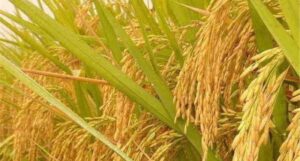MINIMUM SUPPORT PRICE- CALCULATION METHOD
What is MSP?
The minimum support price (MSP) is an advisory price recommended by the government which aims:
- To safeguard the farmer to a minimum profit for the harvest,
- Maintain financial stability in agricultural system,
- Encourage production and
- Increase food security in the country.
Initially MSP was an incentive for farmers to adopt technology with aim to increase the productivity of agricultural land, but later it is seen as a market intervention and farmer income scheme.
There is lack of awareness among farmers of the existence of an MSP, while awareness of MSP procurement agencies is also poor with only about 20-25% of wheat and paddy produce being sold at MSP.
Who announce and fix MSP?
- MSP is fixed on the recommendations of the Commission for Agricultural Costs and Prices (CACP), an apex advisory body for pricing policy under the Ministry of Agriculture.
- CACP recommends the price based on factors like national requirements, available resources, farmer wages, cost of living and product competitiveness.
- Thus, the Cabinet Committee of Economic Affairs announces MSP based on recommendation of CACP.
- Food Corporation of India (FCI) and the National Agricultural Co-operative Marketing Federation (NAFED) are involved in implementing the MSP at the state level.
- While providing a support price to farmers, MSP also supports the public distribution system which provides subsided food.
History of MSP in India
- During the years of the green revolution in India (1960s decade), a number of agriculture policy strategies were mooted including a government price policy for food grains.
- One of the main goals was to increase the productivity of agricultural land. For this goal, high yielding varieties (HYVs), better equipment and fertilizers were adopted.
- Agricultural Price Commission (APC) came into existence in 1965. The Commission introduced a number of price policies including procurement at pre-decided prices, minimum support prices and a distribution system to supply food grains at subsidised rates.
- Later, APC was reconstituted into the Commission for Agricultural Costs and Prices (CACP) in March 1985.
- Other than central organisation and state level bodies, a number of other institutions are also involved in the process of implementing the MSP including Food Corporation of India(FCI) and the National Agricultural Co-operative Marketing Federation (NAFED).
- Impacts- These changes resulted in increased production of grains such as wheat and rice resulting in grain shortages to grain surpluses.
Crops covered under MSP
A total of 23 commodities are covered by MSP mechanism which includes 22 mandated crops and fair and remunerative price (FRP) for sugarcane. All the covered crops are listed below:
Cereals Pulses Oilseeds Commercial crops 1. Paddy 1. Chickpea / Gram 1. Peanut 1. Copra 2. Wheat 2. Tur 2. Rapeseed 2. Sugarcane 3. Maize 3. Moong 3. Soyabean 3. Cotton 4. Sorghum 4. Urd 4. Sesame 4. Raw Jute 5. Pearl millet 5. Lentil 5. Sunflower 6. Barley 6. Safflower 7. Ragi 7. Niger seed



Method to calculate MSP
- Cost A2: It refers to the costs, a farmer actually pays out of his/her pocket for purchasing various inputs and labour.
- Cost A2+FL: It is cost of family labour involved in farm operations. So it is added to A2, i.e. A2+FL.
- Cost C2: It includes imputed costs of family labour, imputed rent of owned land and imputed interest on owned capital.
See also….
Current MSP Rate 2022-23